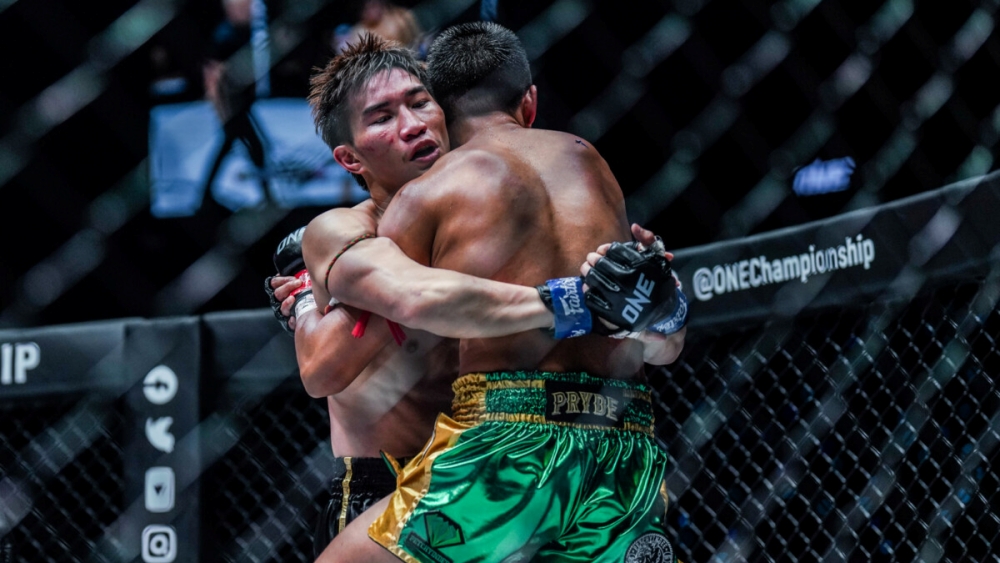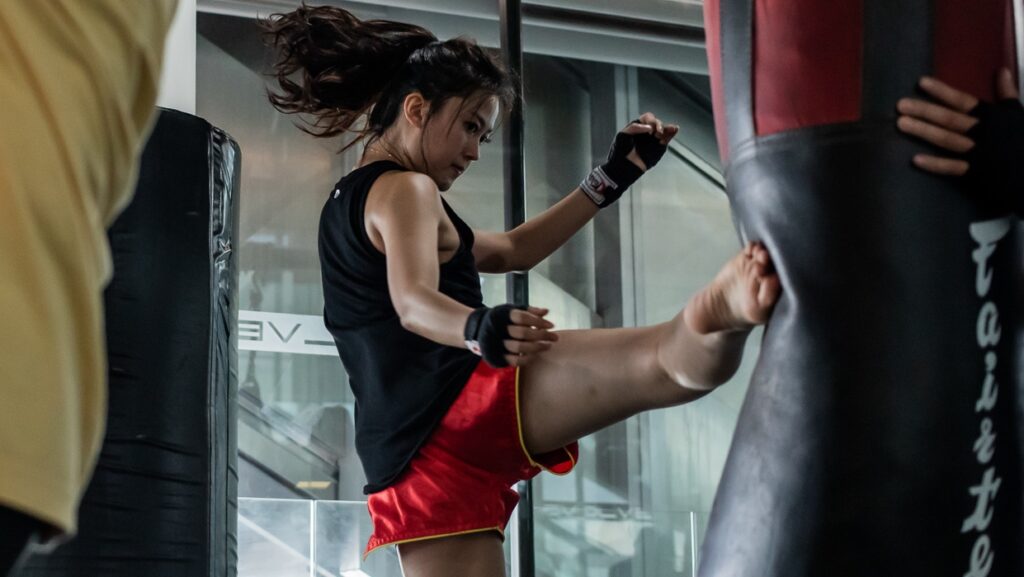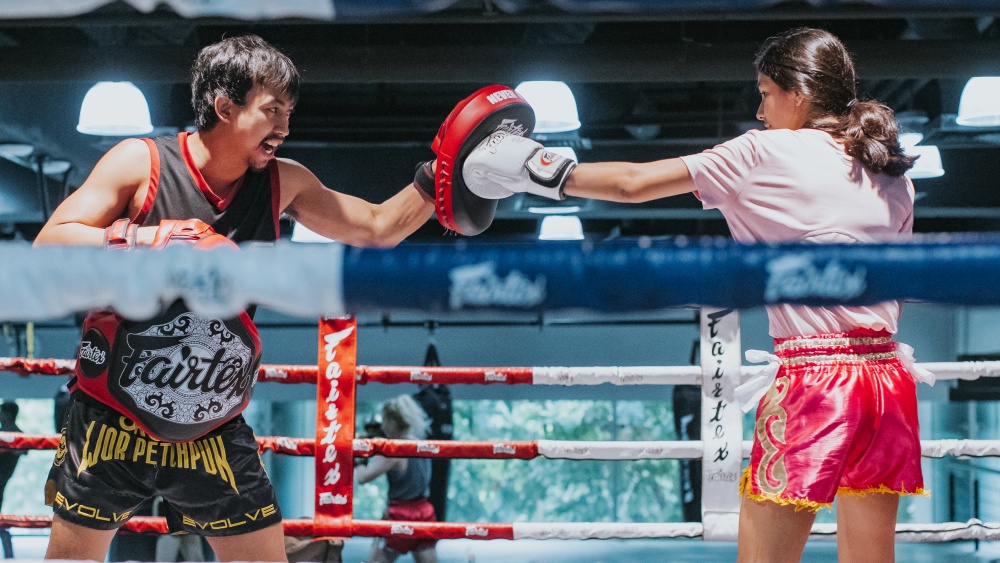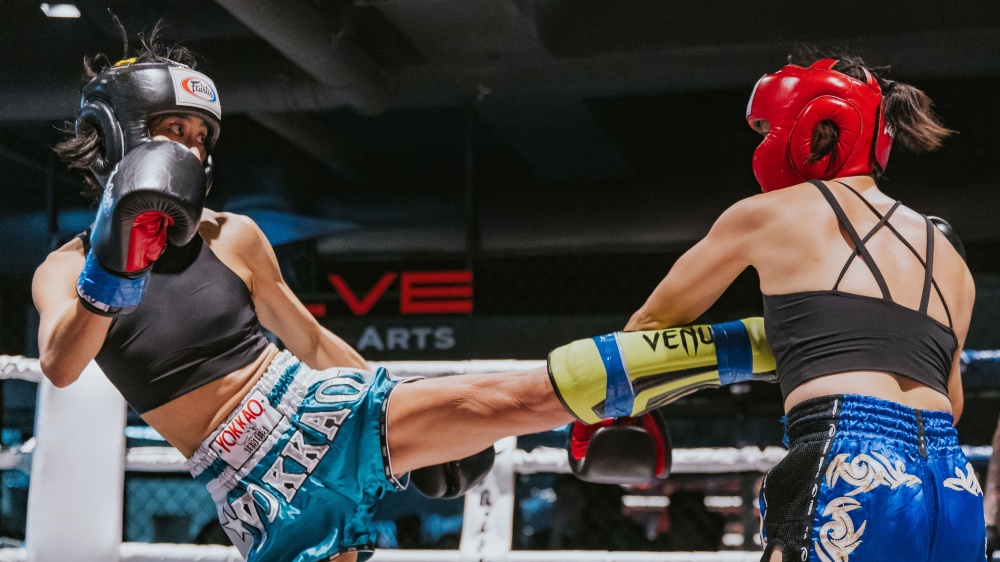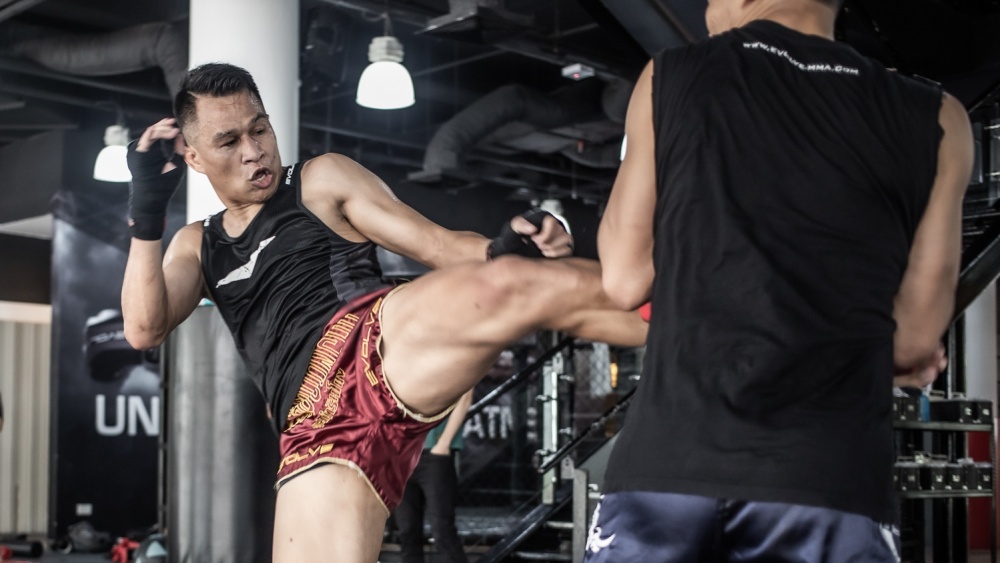Muay Thai utilizes a unique lineup of techniques. These techniques include punches, elbows, knees, kicks, clinch, sweeps, and throws. Throws are unique to Muay Thai and there are a few things that you need to know in order to understand this technique.
Sweeps and throws, dumps and takedowns are descriptive of single techniques but they do mingle amongst each other, often crossing over each other in technique. Aside from the different words used to describe this technique, throws are legal moves in a Muay Thai fight.
What Is The Difference Between A Throw And A Sweep?
In Muay Thai, a throw and a sweep are two different techniques used to bring an opponent to the ground. While they may look similar, there are some key differences between the two techniques.
A sweep is typically executed using the feet or legs and involves using a sweeping motion to take out an opponent’s base. This can be done by using your leg to sweep their legs out from under them, or by using your foot to sweep their supporting leg out to the side. The aim of a sweep is to make the opponent lose balance and bring them to the ground by attacking their legs.
A throw, on the other hand, involves using your upper body and hips to make an opponent lose balance and bring them to the ground. Using the hips shouldn’t be associated with a judo-type hip throw.
So, the main difference between a throw and a sweep is which part of the body is used to execute the technique. Sweeps use the feet or legs to attack the opponent’s base, while throws use the upper body and hips to take the opponent off-balance.
Both techniques can be effective in bringing an opponent to the ground, and although throws often fall into a gray area concerning how you can throw your opponent, there are some basic rules to follow when executing a throw in Muay Thai.
Rules Concerning Throws
The rules around throws can vary depending on the organization and event, but here are some general guidelines, more don’ts than do’s.
- The throw must be executed by using your own body weight and without lifting your opponent off the ground.
- You cannot throw your opponent by pulling or twisting their head, or neck.
- You cannot use your elbow or knee to strike your opponent during the execution of a throw.
- You cannot hold onto your opponent’s shorts or grab onto their clothing during the execution of the throw.
- You cannot grab below the waist and lift your opponent and throw them
- You cannot strike them while they are on the ground.
It is important to note that different organizations may have slightly different rules and regulations around throws in Muay Thai, so it is always best to check the specific rules of the event you are competing in.
Executing a Throw
It’s important to know when to execute the throw. Whether it’s waiting for your opponent to throw a knee, throwing them from the clinch, or dumping them after a sweep it’s all about the timing. You can also use a throw as an escape defense from a body lock position.
It may need to be mentioned that it is possible to really hurt your opponent with a throw that upends them, take this into consideration when deciding which throw and how much force you execute it with.
Unbalancing Act
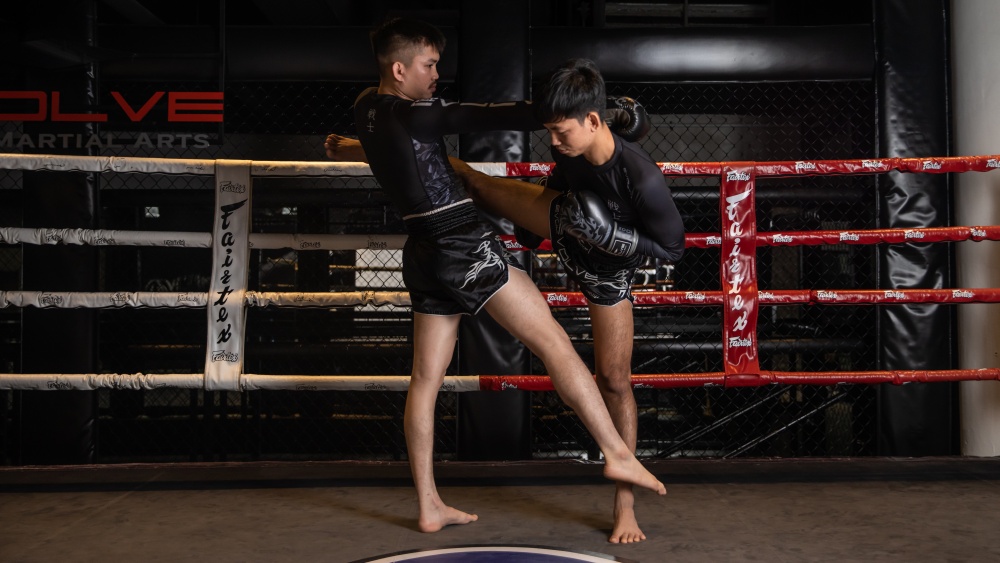
In order to execute a successful throw, it’s important to first make your opponent lose balance and disrupt their center of gravity. This can be done in a couple of ways.
The two common methods are through catching or from the clinch.
When catching an opponent, a fighter will typically wait for their opponent to throw a kick or move in a particular way, and then use that momentum to catch them off-balance. For example, a fighter may catch a kick and then sweep their opponent’s other leg out from under them and follow with a throw. It’s also possible to catch a punch and use the momentum to pull their opponent off balance before executing a throw.
From the clinch position, a fighter can use various techniques to control their opponent’s balance and movement. They may use their arms and legs to create leverage and make their opponent lose balance, or they may use their hips and body position to disrupt their center of gravity. Once their opponent is off-balance, they can then execute a throw and take them to the ground.
Making your opponents lose balance is a key component of executing a successful throw in Muay Thai. By disrupting their center of gravity and catching them off-guard, you can create openings and opportunities to take advantage of their vulnerable position and gain an advantage in the fight, scoring points and disrupting their game plans.
Psychological effects
Muay Thai throws can have significant psychological effects on the person being thrown. If your opponent keeps ending up on their back it’s going to take a toll on them mentally and physically. It’s frustrating and takes energy to get up off the canvas.
Here are some of the psychological effects of Muay Thai throws:
- Loss of confidence: Being thrown can work on your opponent’s confidence, particularly if they are thrown multiple times in a fight. This can make them hesitant to engage and that ultimately makes them more vulnerable.
- Frustration and anger: Being thrown repeatedly can be frustrating and angering, leading an opponent to make mistakes and become more aggressive than they would be otherwise.
The mental aspect of throws shouldn’t be overlooked and throws should definitely be seen as a way to get into the head of your opponent, while adding up points. Throws are not about strength or aggression or solely for scoring points, it’s about dominance and taking the mind of your opponent.
Dominance
Throws can be used to show dominance in a Muay Thai fight. When a fighter executes a well-timed and well-executed throw, it can be an impressive display of skill and athleticism. The crowd and judges often react positively to a successful throw.
It can also have a demoralizing effect on their opponent. If your opponent is repeatedly thrown to the ground, embarrassed and frustrated, this can affect their confidence and focus in the fight. This can give you an advantage in the fight.
Throws can also be used strategically to control the pace of a fight if things are moving in the wrong direction.
Slow Down The Fight

A throw can potentially slow the pace of a fight in Muay Thai. When a throw is executed, it takes a certain amount of time. The ref will step in between while your opponent gets up and this may be just the opportunity for a deep breath you are needing.
Throws are part of what makes Muay Thai a unique combat sport and having a few throw techniques in your arsenal is mandatory. Different associations have different rules and should be understood before your fight.
Throws can be used to escape, score points and mentally challenge your opponent. There are certain types of throws that are more brutal and have the possibility of seriously injuring your opponent and care should be given to what you are doing. You should only use as much power as needed to get the job done.
You may also like:
